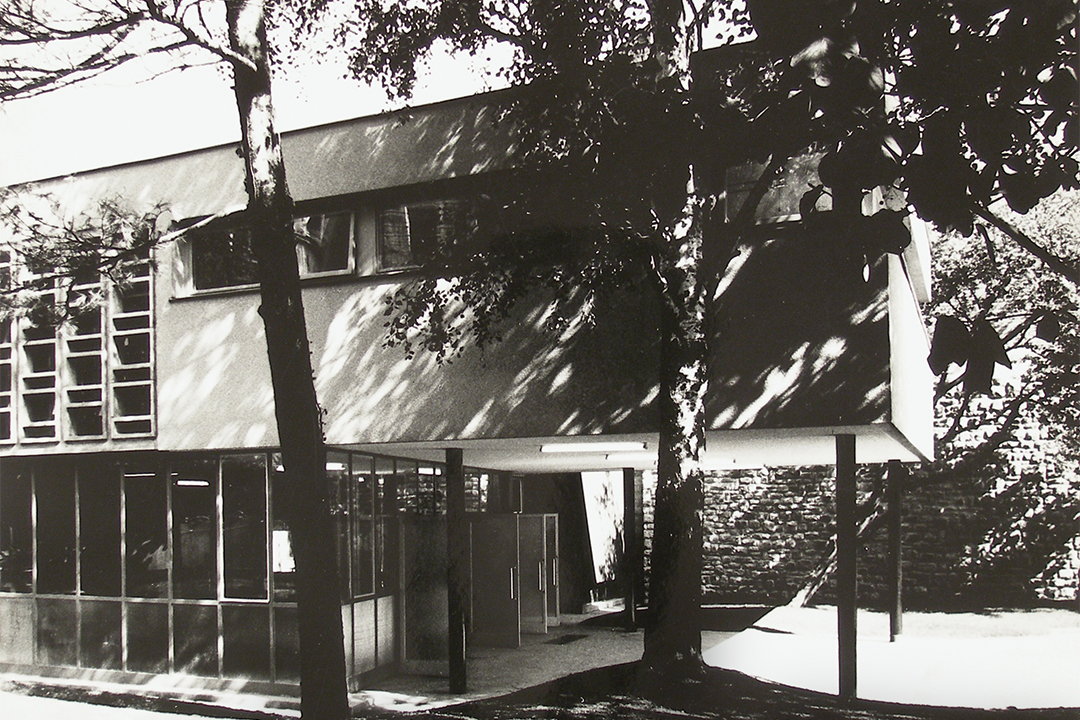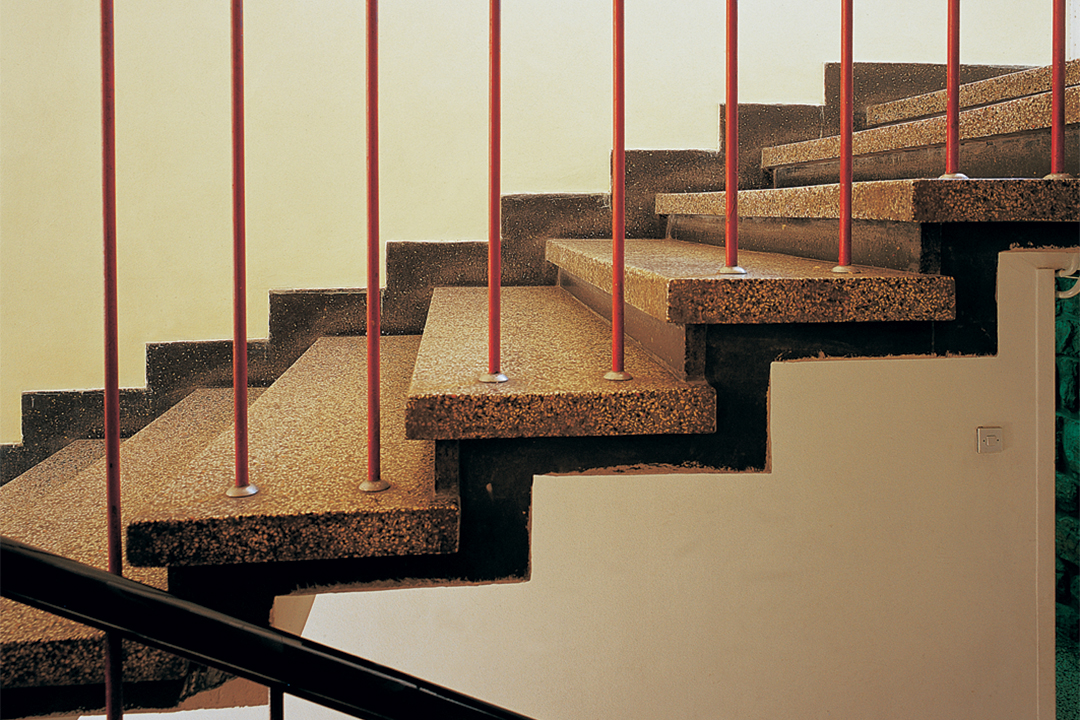“Dear Dr. Fischer-Sartorius, you obviously do not recall the time when in 1954 I joined you, with a lot of passion and understanding for your cause, in defending against the town planners the location for the construction of your Centre for the Welfare of Mother and Child in Klaićeva Street in Zagreb. You probably don’t remember it, but with my uncompromising attitude of an architect serving the investor, I managed to prove that a bird in the hand is worth two in the bush – or, to be precise, it is better to receive aid from UNICEF and build on one’s own site, than to philosophize about architecture and the way how to build the Center separately from today’s Children’s Hospital”.1

This is how Vladimir Turina started his open letter to Dr. Feđa Fischer-Sartorius, Director of the Centre for the Welfare of Mother and Child in Zagreb, on May 1, 1961. This is a letter of protest against the director who violated the architect’s copyright and undertook actions on her own that eliminated the author from the completion of his own work. The decision to exclude the author after the completion of the first phase was not explained, but it wasn’t in any way caused by dissatisfaction with what had been constructed or because the programme had changed.
“Furthermore, in regard to your future construction on Prilaz JNA Street, which is a part of a complete idea and architectural concept that won a visual arts award in 1957 and which is a building I have a right to as an architect and author pursuant to the Copyright Act, I hereby declare that I do not intend to nor will I ever surrender my copyright to the building I designed and constructed two thirds of, just because you don’t agree with some of the propositions that I, as an architect and professor of architecture, find right and modern. I hereby declare that I will defend these rights regardless of the consequences, even before a court if necessary, if you force another architect into the job. I find it necessary to point out that in this way I will be protecting the interest of all architects of this country and the copyrights guaranteed by this act.
I think you are wrong to announce a competition (an open architectural competition!) for one third of the building for which I supplied the complete design back in 1953, which was publicised at home and abroad as a showpiece of our post-war architectural achievement. I see your act as an excuse for finding a new “author” who would only attach himself to my work and receive a fee for it. In this way, he would be attached to a work that won a visual arts award in 1957 – the first of its kind since the liberation.”2
The bitterness with which Turina attacked his client equals the passion with which he tackled this task and the enthusiasm caused by the initial support for the project. In a special publication issued in 1957 that presented the project and the execution of its first phase, Turina pointed out that the “versatility of the issues that conditioned the general architectural concept and the final spatial formation of the Centre deserves to be treated separately.”3 In a comprehensive text that shows the urbanistic, functional–spatial, architectural–visual and economic aspects of the project, Turina praised the principal of the children’s hospital, believing that it was her initiative and effort that largely contributed to the execution of this task.
However, the real background of his dissatisfaction was largely neglected. When it became obvious that the praised client did not want to continue the collaboration with the author, the repressed conflicts came to light.
Turina saw the project in a context wider than that of just the building of an annex. He invested much more effort into the design and analysis of the problem and surpassed the borders of the expected. This led to a split in opinions between the author and the client that eventually led to a complete disagreement. Right in the introductory part of his text, Turina says that the normal conditions in the construction of buildings of similar contents surpassed the known building constructions in the country, so their synthesis is of interest in the context of studying the spatial-functional and architectural-visual side of the problem.
“In such a framework, the Centre for the Welfare of Mother and Child can serve as a proof and a certain guideline. It should provide a clearer image of a path along the line of general architectural synthesis, whose elements represent an indivisible chain of forces, which is in general called architecture in the contemporary sense.”4 He also said that budgetary constraints caused certain compromises that he could not easily accept as the author. For him, budgetary constraints were much more important than all others – conditions on the location, relation towards the existing building, construction technology or infrastructure.
Turina found a motivation for his enthusiasm in the new requirements of the programme – the development of preventive medicine. He thought that it enriched the architectural register with contents that were without precedent before that time.
Turina thought that everyday practice confirmed the thesis that architecture’s role had changed. The architect is no longer an author who just gives shape to the given task, but also participates educationally in the programming process. Every ambitious architect should act educationally, not necessarily as a pedagogue, but by “expanding” his activities. He sees architecture as a combination of scientific and visual disciplines, the synthesis of which is pushed back under pressure from the management. The architectural profession in these conditions, “in the general image of the evolution of culture and technology”, comes down to the inevitable law of a “permanent precedent”. In that way, the architectural act is not comprehended as a result of a continuous activity but as an exception, something that happens only occasionally and under special circumstances. Architects are expected to have self-confidence, which is exactly what Turina was demonstrating in the way he talked about his work.
Speaking of the first of the criteria basic in his approach to the task – the town planning aspect, Turina stressed the difficulties of the location and the relation to the existing building of the Children’s Hospital. He considered the greenery that covered the lot and the surrounding courtyards to be inspirational, which later led to the proposal of non-aggressive typology more suitable to open spaces than the conventions of a standard city block. Turina found arguments for this conscious “contrast” in the opinions of most architects of his time who thought that the “elementary creative values of all eras are essentially identical in terms of quality”.
This opened the way to the original idea of the “passage-house” conceived on the scale of Corbusier’s Modulor. Turina furthermore speaks of “homme au bras levé“ dimensions, about the physiologic and psychological values of colour, a certain reserve concerning the integration of visual and plastic disciplines within the architecture, the economic and technical aspects of the project, but apart from the general qualifications, he said nothing about his concept of “architectural synthesis”.

Turina’s building develops on two opposite lots within the same block. The sites are slid by one lot’s width. This gave a shift to the ribbon-like layout and enabled the creation of a special link between two opposite accesses. The ribbon-like flow did not create a central spot, but a sequenced ribbon of programmes that communicated in a special way with lateral conditions, regardless of whether it was the interior or exterior. Although the building was mostly perceptible, despite the block’s depth, its basic value actually was the interior that was paradoxically shown as the exterior. The building is conceived as a tunnel passage with the corridor of emphasized direction between two parallel streets. Concerning the building’s function, the corridor is selectively accessible to the public, but this in no way downplays the sense of the passage. The project has no alternative passage outside the building.
Linear movement between two parallel streets does not end with the horizontal flow, but branches at Deželićeva into a vertical movement through a mini-tower placed on the street line, as in all surrounding houses. In this way, the concept of linear movement at the same time operates with two opposite typologies connected into a single whole. On the side of Klaićeva street, the building looks like a pavilion structure in free space, and the side of Deželićeva street it looks like an infill into the standard city block.
The paradox is an original value of the project that, unfortunately, still has not been completed in accordance with the original project. The building in the opposite street was constructed based on an anonymous design, and the link between the two sides is established with narrow corridors with many barriers. The passage is broken by the usage methods and passage regimes. It is actually possible today to go from one street to another through the building, but this can be done only by those in the know and those exploring the remains of Turina’s archaeology. Turina’s idea remained completely misunderstood and forgotten. Although the incomplete building has anthology value in Croatian architecture, it was more due to its “plastic” values and not because of the “architectural synthesis” that remained unread until this day.
From today’s perspective, the building was the first of its type in Croatia and is still an unsurpassed example of architectural and urbanistic “synthesis”, as well as thinking about architecture in an urban manner. Today, these entities are easily operated in numerous hybrid and unexpected twists. The paradox became everyday practice. But, half a century before, Turina was well on his way to complete a pioneering work, just like his many other works that were never completed.
1. Open letter to Dr. Feđa Fischer-Sartorius, director of the Centre for the Welfare of Mother and Child in Zagreb, manuscript, Zagreb, May 1, 1961, MGZ/ZCM archives
2. Ibid.
3. Centre for Welfare of Mother and Child in Zagreb, special publication, author’s edition, Zagreb, 1957.
4. Ibid.